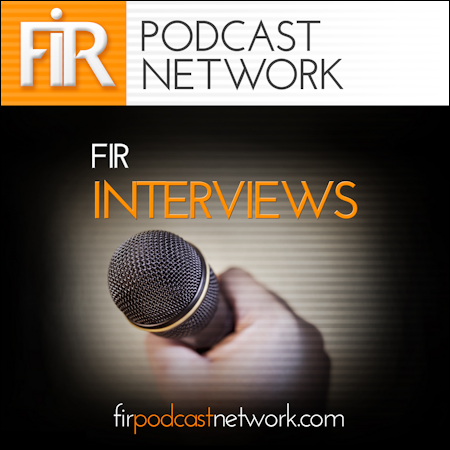If you offer an RSS feed from your website or blog that isn’t the full content, here’s something for you to think about.
Like many people, I’m an RSS creative-consumer. That means I read almost everything of interest to me via RSS as well as publish content that you can get via RSS. I don’t visit many websites including blogs unless I’m googling in search mode or if I want to leave a comment.
I read my content of interest on different devices, from desktop PCs to laptops to mobile phones, whatever is to hand and wherever I happen to be.
If I find a site of interest, I’ll subscribe to its RSS feed. If it doesn’t offer a feed, I usually leave it there. And if it offers a feed that first leads you to a login firewall – bad mainstream media tactic – that usually gets deleted unless the content on offer is unmissably compelling (very few of those).
I no longer subscribe to any site that only offers subscriptions to RSS feeds that contain partial content, not the Full Monty.
There is one exception: the PR Headlines aggregation feed from Blogdigger which I’ve been subscribed to since 2004, but that’s likely to be a casualty very soon.
From the reader’s point of view, I think it’s quite clear what the benefits are from full-content RSS, starting with you get all the content that interests you without having to go to a site – especially useful if you’re somewhere where you can’t get online (eg, in an aircraft).
Maybe most important of all, full content via RSS lets you focus on all that content – and no distractions with website design and other visual elements.
Now add in the publisher’s perspective (and if you write a blog, you’re a publisher) with the clearest explanation I’ve yet seen on why offering complete content in your RSS feed, rather than partial content, is a good thing.
[…] Full text feeds makes the reading process much easier. It means it’s that much more likely that someone reads the full piece and actually understands what’s being said — which makes it much, much, much more likely that they’ll then forward it on to someone else, or blog about it themselves, or post it to Digg or Reddit or Slashdot or Fark or any other such thing — and that generates more traffic and interest and page views from new readers, who we hope subscribe to the RSS feed and become regular readers as well.
The whole idea is that by making it easier and easier for anyone to read and fully grasp our content, the more likely they are to spread it via word of mouth, and that tends to lead to much greater adoption than by limiting what we give to our readers and begging them to come to our site if they want to read more than a sentence or two.
So, while many people claim that partial feeds are needed to increase page views where ads are hosted, our experience has shown that full text feeds actually do a great deal to increase actual page views on the site by encouraging more usage.
The bold emphasis in the second paragraph is mine, as that gets right to the heart of it.
Full content RSS feeds. It’s a no-brainer.












14 responses to “Right to the heart of full-content RSS feeds”
Good post.
An appeal to the masses may have some effect, but I’ve sort of taken the matter into my own hands. Then again, I’m fine with being tied to a desktop browser, so it’s not for everybody.
The slight variations between RSS display versions and in-context display have caused me to prefer to read the posts in their original context. I’ve found that, yes, sometimes the context is distracting from the message. But sometimes it helps, and at the least, nothing is typically screwed up or cut off. Lately I’ve been psyched about (and indeed browsed to this message using) Google Reader’s Next bookmarklet, which I wrote a post about just yesterday.
Paul, for me the context distracts from the message most of the time.
One benefit I find from reading content in my RSS reader (FeedDemon ) is that the typeface, font size and other text attributes are consistent across different feeds. So no visual surprises.
I still see images, videos and other decorative elements. So to me, I do see content in context. But on my terms.
FD has a similar feature to Google Reader’s Next bookmarklet.
One of my favorite blogs of late(Freakonomics) cut a deal with the NY Times and is now feeding only a blurb of blog post forcing you to go to the generic NY Times site to read whole post. Not only that but all comments now unlinked. Suffice it to say I dropped them. I only hope the Times is paying them well, I am sure that many other readers will likewise be turned off by this “click-farming” approach. Old media want to use the tools but don’t know or respect the culture that is imbued in them.
Well, that has well and truly provided me with some food for thought. Improving my RSS is something I’ve been thinking of: it’s on my list of things to do on a rainy day.
Looks like it’s going to be a rainy day today – now what is the probability of that? ;-)
Mark, that’s a good example of those who still see social media in the same way as some mainstream media. They’re not part of the trend.
Today’s a good day to do it, Garrison. Rainy or not!
I think it’s time someone throws a spanner in the works:
I largely disagree. I actually prefer partial feeds. Very much prefer them.
Why?
Because they allow me to scan. They allow me to very quickly go through a large number of feeds and entries to pick the ones I want to read.
I don’t have the time to read everything I subscribe to. I don’t even want to read everything I subscribe to. But I want to very quickly see if among the entries is something I’m interested in, which can vary a lot as far as the topics and/or keywords are concerned.
A short 1 paragraph well written teaser helps me and allows me to do that. If I have to scroll through pages and pages of text (especially on high frequency blogs/sites) I get annoyed quite quickly. I’ve actually unsubscribed from sites like that.
I’ve got my browser open anyway, so it’s one click to open the page on another tab. I can read it, I can comment on it, I can bookmark it for reference, I can follow links, I can do everything the web allows me. Oh, I can even comparably safely access some of the content I’ve deliberately turned off in my RSS-Reader for safety reasons (as it uses the IE engine).
So for me I’d like to rewrite your last paragraph:
Well written teaser RSS feeds. It’s a no-brainer.
Fair comment, Armin, a reasonable view.
But if things such as Techdirt described are important to you, then partial-content feeds won’t do the job.
As for scanning content, my scan is always the headlines of feeds. If one catches my attention, then I look at the body of the item concerned. If it’s caught my attention, I want to read the story. I definitely don’t want to see a tease and have to click to go somewhere. So I don’t.
Still, on how we make use of RSS feeds and our preferences to what content comes in and how it’s presented, each to his own, right?
I agree with you, Neville: full feeds are a no-brainer.
After all, I (much like you, I suspect) subscribe to the RSS feed so that I don’t have to visit websites manually. If I had to do that, I’d never get through nearly as much content.
So, please don’t force me to go back to your site to read full post. More often than not, I won’t bother.
Also agree the RSS headline is my way of filtering.
I agree Neville. Full feeds are the way to go. The main argument people seem to have in favor of partial feeds is to get traffic to their website. The question then becomes “Why on earth do you need traffic to your website?”
Advertising? – You can embed this in your feed. I’ve even seen this as a great platform for monetization. Donate and get access to the ad-free feed.
Statistics? – Services like Feedburner offer great stats for your feed. Encouraging the feed also allows you to draw a more definitive line between those discovering your site for the first time and regular readers.
In short, there really is little reason people need to visit your site. So, why stifle distribution of your content?
As a side note; Some blog services have your feed defaults set to be partial. I’d imagine that many people don’t even realize this (I know I didn’t for quite a while).
Just about the only time I visit the site of someone I’ve subscribed to in an RSS feed is to leave a comment or, if not a WP blog, to get a trackback URL. So no incentive to visit a site.
That might be different if I were interested in, say, art or graphic design or something highly visual where how content is presented by the author is a major part of understanding that content, and where the RSS feed wouldn’t be enough to do that.
That’s not much to do with the full or partial argument, though, more about visiting a site or not.
Ed, good point re blog services. That’s the reason why I’m going to ditch the PR Headlines list I’ve subscribed to for the past 3 years.
[…] For one thing, I hardly see any websites or blogs that employ OpenID. And that’s when I actually visit websites and blogs, which I don’t do that much because I’m an RSS creator-consumer. […]
[…] up or water them down-my experience with Freakonomics, good conversation on Neville’s blog here. Learn the culture and embrace it if you want to be embraced back. True Hoop an example of good […]
Full content feeds are a no-brainer. If I’m scanning, it’s on headlines. If I want to read something, I want to read it immediately, not get pushed out to a blog and have to re-orient my reading eye to their layout.
I use Google Reader and really like the feature to Star posts. It’s great for things I want to come back to later. If I Star a partial feed, it means I’m going to have to push out of my Reader again the next time I want to see it.
I agree that I’m much less likely to pursue content that doesn’t get pushed completely in an RSS feed.
Oh, and the other nice thing about feeds is that you don’t get caught up in the comments of everything you read. I only want to read comments when I’m going to make one. (Like now)